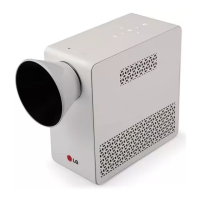8
SAFETY INSTRUCTIONS
ANTENNA
Outdoor Antenna Grounding
If an outdoor antenna is installed,
follow the precautions below. An
outdoor antenna system should not
be located in the vicinity of overhead
power lines or other electric light or
power circuits, or where it can come
in contact with such power lines or
circuits as death or serious injury can
occur. Be sure the antenna system
is grounded so as to provide some
protection against voltage surges and
built-up static charges. Section 810
of the National Electrical Code (NEC)
in the U.S.A. provides information
with respect to proper grounding of
the mast and supporting structure,
grounding of the lead-in wire to
an antenna discharge unit, size of
grounding conductors, location of
antenna discharge unit, connection
to grounding electrodes and
requirements for the grounding
electrode.
Antenna grounding according to the
National Electrical Code, ANSI/NFPA
70
Antenna Lead in Wire
Grounding Conductor
(NEC Section 810-21)
Antenna Discharge Unit
(NEC Section 810-20)
Power Service Grounding
Electrode System (NEC
Art 250, Part H)
NEC: National Electrical Code
Ground Clamp
Electric Service
Equipment
Ground Clamp
FCC NOTICE
Federal Communications Commission
(FCC) Statement
You are cautioned that changes or
modifications not expressly approved
by the part responsible for compliance
could void the user’s authority to
operate the equipment.
This equipment has been tested and
found to comply with the limits for
a Class B digital device, pursuant
to part 15 of the FCC rules. These
limits are designed to provide
reasonable protection against
harmful interference in a residential
installation. This equipment generates,
uses and can radiate radio frequency
energy and, if not installed and used
in accordance with the instructions,
may cause harmful interference to
radio communications. However, there
is no guarantee that interference will
not occur in a particular installation.
If this equipment does cause harmful
interference to radio or television
reception, which can be determined by
turning the equipment off and on, the
user is encouraged to try to correct
the interference by one or more of the
following measures:
– Reorient or relocate the receiving
antenna.
– Increase the separation between the
equipment and receiver.
– Connect the equipment into an outlet on
a circuit different from that to which the
receiver is connected.
– Consult the dealer or an experienced
radio/TV technician for help.

